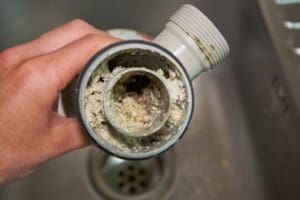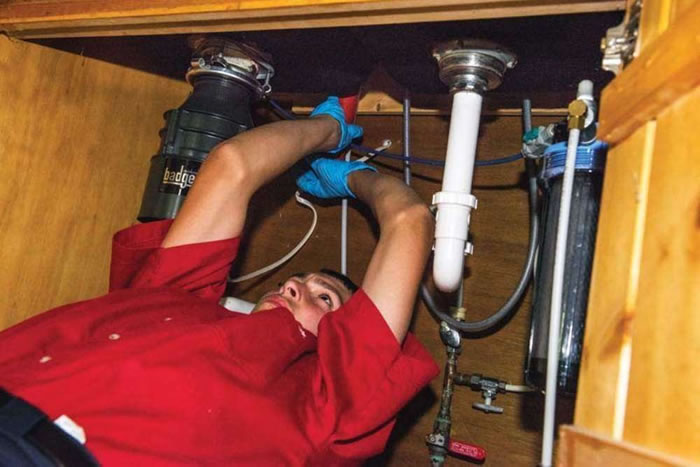Our Complete Handbook to Managing Low Water Pressure in Your Home
Our Complete Handbook to Managing Low Water Pressure in Your Home
Blog Article
We've discovered this post involving Low Water Pressure in the House? listed below on the internet and believe it made perfect sense to talk about it with you over here.

Low tide stress in your home can be a frustrating problem, influencing everything from showering to washing recipes. If you're experiencing weak water flow, there are several feasible causes and options to explore. In this guide, we'll review common factors for low tide pressure and sensible actions to resolve the problem successfully.
Intro to Low Tide Stress
Low tide pressure occurs when the flow of water from your faucets, showers, and various other components is weak than typical. This can make daily tasks more challenging and less reliable. Understanding the sources of low water stress is crucial to finding the right service.
Common Reasons For Low Tide Pressure
Faulty Pressure Regulatory Authorities
Pressure regulators are responsible for maintaining regular water stress in your home. If they malfunction, it can cause low tide pressure or irregular circulation throughout your house.
Metropolitan Water System Issues
In some cases, the trouble lies outside your home. Local water supply problems, such as main line leaks or maintenance job, can temporarily reduce water stress in your area.
Pipe Obstructions
In time, pipes can end up being clogged with mineral deposits, sediment, or debris, limiting the flow of water. This is an usual problem in older homes with galvanized steel pipelines.
Deterioration
Corrosion within pipes can lead to leakages and lowered water pressure. Rust buildup can tighten water circulation, especially in maturing plumbing systems.
How to Diagnose Low Tide Pressure
Evaluating Pipes
Examine noticeable pipelines for indications of leakages, corrosion, or obstructions. Take notice of any type of unusual audios, such as banging or rattling pipelines, which could suggest problems within the plumbing system.
Consulting with a Plumber
If you're incapable to pinpoint the reason for low water stress, think about employing a professional plumber to conduct a comprehensive evaluation. They can identify underlying concerns and suggest appropriate services.
Checking Taps and Components
Begin by testing the water stress at various faucets and fixtures throughout your home. If the issue is isolated to specific locations, it might show local problems.
DIY Solutions to Deal With Low Tide Pressure
Flushing Hot Water Heater
Sediment build-up in the water heater can limit circulation and lower effectiveness. Flushing the tank periodically assists get rid of sediment and preserve ideal performance.
Examining Stress Regulatory Authority
Make certain that the pressure regulator is functioning properly. Adjusting or replacing the regulatory authority can assist recover appropriate water pressure throughout your home.
Cleaning Aerators and Showerheads
Natural resources can build up in aerators and showerheads, reducing water circulation. Get rid of and cleanse these parts regularly to improve water pressure.
Clearing Clogs in Pipes
For small obstructions, attempt using a plumbing snake or chemical drain cleaner to clear blockages in pipelines. Beware when using chemicals and adhere to safety and security guidelines.
When to Call an Expert Plumber
If DIY efforts stop working to deal with the concern or if you think considerable plumbing problems, it's best to seek help from an accredited plumber. They have the know-how and tools to resolve intricate issues safely and properly.
Safety Nets to Keep Water Pressure
Installing a Pressure Booster
Take into consideration setting up a stress booster pump to improve water pressure in locations with constantly low circulation. This can be specifically advantageous for multi-story homes or buildings with high-demand components.
Tracking Water Use
Be mindful of water use habits and prevent overtaxing the plumbing system. Easy changes, such as shocking showers and washing tons, can aid preserve adequate water stress.
Routine Maintenance
Schedule routine upkeep for your plumbing system to avoid problems such as rust, leakages, and obstructions. Addressing minor problems early can assist prevent more significant fixings in the future.
Conclusion
Dealing with low tide pressure can be irritating, yet identifying the underlying causes and carrying out suitable services can recover ideal flow throughout your home. Whether it's cleaning up aerators, examining pipelines, or seeking advice from a plumber, taking proactive steps can make certain a consistent supply of water for your day-to-day demands.
FOUR WAYS TO FIX LOW WATER PRESSURE NOW
Turning on a shower or faucet only to find the water comes out in a sad, slow drizzle is never a good feeling. How exactly are you supposed to wash a pan or take a quick shower when it takes 10 minutes just to rinse off a little soap? The good news is that when your water pressure is bad, there's always a cause: typically one that can be easily fixed. Here are some of the most common causes of low pressure and what you can do to fix the issue:
DEBRIS AND MINERAL DEPOSIT BUILDUPS
If you notice low water pressure from just one or two of the fixtures in your house, the problem likely has to do with debris buildup. Water is full of minerals and other debris, all of which can accumulate in your pipes and on your fixtures. This can cause a blockage that affects how much water flows through. To fix this, try filling a small plastic bag with white vinegar, and use a rubber band to hang it around your showerhead or faucet. Let the head of the fixture soak for a few hours, and the vinegar should loosen the deposits.
WATER LEAKS
Leaks are another common cause of low water pressure. If water is flowing out of your plumbing through a hole or crack before it can reach your fixture, the pressure coming out of the faucet or showerhead will be lower. A plumbing professional is your best bet for finding and repairing a leak in your water supply pipes.
Leaks are another common cause of low water pressure. If water is flowing out of your plumbing through a hole or crack before it can reach your fixture, the pressure coming out of the faucet or showerhead will be lower. A plumbing professional is your best bet for finding and repairing a leak in your water supply pipes.
A VALVE ISSUE
If you have low water pressure throughout your home, check your main shut-off valve to make sure it's completely open. You may also want to see if there's a pressure-reducing valve installed. If there is, have a plumber help you adjust the settings to get the pressure you're looking for.
OTHERS USING WATER
Believe it or not, your low water pressure could be caused by your neighbors. If you notice low pressure at certain times of day, it may be because you and the people living next to you have similar schedules - when everyone is showering at the same time, the pressure will be lower in every home. Low pressure throughout the neighborhood may also be caused by an issue with your municipal water supply. If that's the case, call the supplier to see if they're working on the issue.
https://www.rotorooter.com/blog/water-leaking/low-water-pressure-fixes/

Hopefully you enjoyed reading our post on Dealing with Low Water Pressure in Your Home. Thank you for taking a few minutes to browse our article post. Sharing is good. Helping people is fun. Thanks for your time invested reading it.
Try Here Report this page